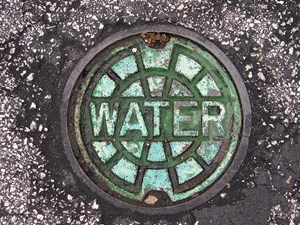Southern Exposure: Cold Wreaks Havoc on Aging Waterworks
(AP) — The sunshine is back and the ice has melted. But more than a week after a deep freeze across the South, many communities are still grappling with getting clean water to their residents.
For years, experts have warned of the need to upgrade aging and often-neglected waterworks. Now, after icy weather cracked the region’s water mains, froze equipment and left millions without service, it’s clear just how much work needs to be done.
The still-unfolding problems have exposed extensive vulnerabilities. Many water systems have decades-old pipes, now fragile and susceptible to breaking. White flight dropped tax revenue in some cities, and a lack of investment has caused problems to become even costlier to fix. Many systems in the South were not built with such low temperatures in mind. But with climate change projected to bring more extreme weather, problems like those seen last week could return.
A 2018 survey by the U.S. Environmental Protection Agency estimated $473 billion was needed over 20 years to maintain and improve water infrastructure. In a 2020 report, the American Society of Civil Engineers said a water main breaks every two minutes on average in the U.S., and described “chronic, long-term and insufficient investment.” The report warned that the “nation’s public health and the economy will be at risk.”
Actually, it’s already happening.
The Mississippi capital of Jackson struggled to fix its damaged water grid, with thousands still facing outages. In Memphis, residents in the city of 650,000 have been told for nearly a week to boil water for three minutes if they plan to use it for drinking, cooking or brushing their teeth. Nearly 25,000 Louisianans still had water outages Thursday, and hundreds of thousands more were under boil advisories.
In Texas, more than 2 million remained under boil water notices Wednesday and 40 public water systems are “nonoperational,” affecting 25,000 people, state officials said. At the height of the problems last week, at least 7 million Texans were told to boil their water. The order was finally lifted Sunday for Houston, where millions had endured power and water outages in the nation’s fourth-largest city that is more accustomed to hurricanes than winter storms.
As temperatures fell below freezing across the South, residents kept their faucets open to prevent pipes from freezing. But the increased demand taxed the already-struggling systems, and the low water pressure meant that boil advisories were needed until safety tests could be completed.
Charles Williams, director of public works for the city of Jackson, said that as frozen machinery at the water plant began to thaw with rising temperatures, dozens of water mains broke.
Old pipes in the city have a history of breaking after cold weather, but a declining tax base has Jackson struggling to maintain its infrastructure. Following integration, affluent white families moved to the suburbs, taking their tax dollars with them. Now, more than a quarter of residents in Mississippi’s majority-Black capital live in poverty.
James Williams, 67, went eight days without water at his house and called Jackson’s water problem a public health crisis.
“The wealthy taxpayers left, so they left Jackson to suffer,” the retired public works department employee said. “It’s not their concern because they don’t live here no more.”
Voters in 2014 overwhelmingly approved an extra 1% sales tax for infrastructure repairs, but the $15 million a year raised is only a fraction of what Jackson needs. Mayor Chokwe Antar Lumumba said close to $2 billion is required to modernize its water system.
In Shreveport, where about 200,000 people were being told to boil their water, Mayor Adrian Perkins pointed to “old, aging infrastructure, just like most American cities.”
Voters in 2019 rejected Perkins’ bond proposal to raise $186 million for infrastructure, including water system repairs and upgrades.
In Tennessee, Memphis Light, Gas & Water said the cold led to problems at pumping stations and ruptures in water mains and service lines. Crews were making repairs and testing for contaminants was being done, but no timetable has been set for a return to normal service.
Problems arose at some of the city’s 140 wells that deliver water to reservoirs at eight main pumping stations. Wells failed, several reservoirs froze and engines and motors at pumping stations overheated. The persistent freezing temperatures exposed problems at pumping stations and other parts of the system, some of which dates to the 1930s.
The utility is in the second year of a five-year, $105 million plan to update and strengthen infrastructure. At a news conference Tuesday, utility President and CEO J.T. Young said the plan will be reassessed in light of the recent freeze to make sure it matches the needs that have arisen.
Related News
From Archive

- Glenfarne Alaska LNG targets late-2026 construction start for 807-mile pipeline project
- U.S. water reuse boom to fuel $47 billion in infrastructure spending through 2035
- $2.3 billion approved to construct 236-mile Texas-to-Gulf gas pipeline
- Major water pipe break in Puerto Rico hits over 165,000 customers
- Potomac River Tunnel project enters construction phase beneath Washington, D.C.
- Pennsylvania American Water launches interactive map to identify, replace lead water service lines
- Trump's tariffs drive $33 million cost increase for Cincinnati sewer project
- Utah city launches historic $70 million tunnel project using box jacking under active rail line
- Tulsa residents warned after sewer lines damaged by boring work
- Fatal trench collapse halts sewer construction in Massachusetts; two workers hospitalized




Comments